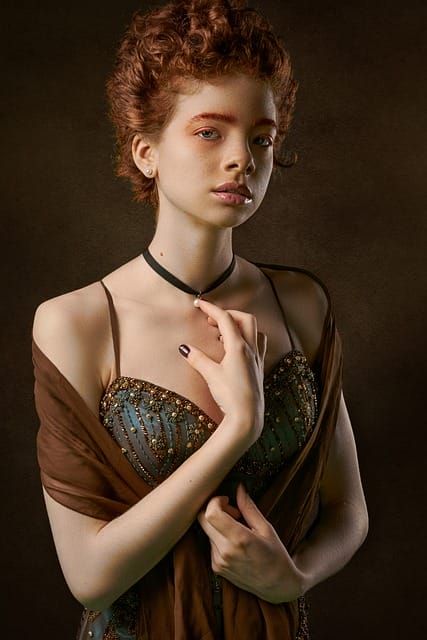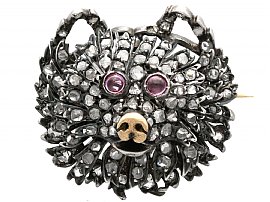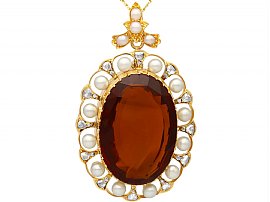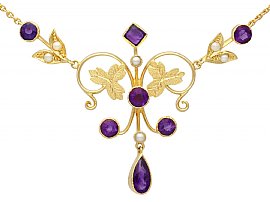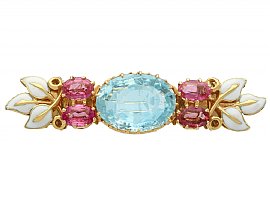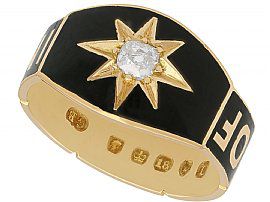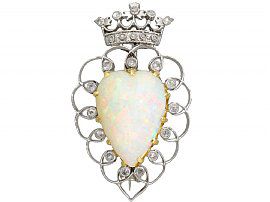19th Century Jewellery
What Jewellery Was Popular in the 1800s?
The 19th century is often considered to be synonymous with the Victorian period, as Queen Victoria began her reign very young in 1837 at the age of 18, and reigned until her death in January of 1901. There were in fact three other monarchs before Victoria in the 19th century, however they all held relatively short reigns compared to the record-setting 63 years and 216 days for which Queen Victoria reigned.
Until 2015, Queen Victoria was the longest-reigning British monarch of all time; however, she was surpassed by Queen Elizabeth II, who was the reigning monarch for more than 70 years. It is unsurprising, then, that the 19th century is widely regarded as being the Victorian era.
The fashion and styles of the period, jewellery included, are generally split into three separate periods by most historians: the Romantic period, the Grand period, and the Aesthetic period. These distinct eras largely reflect the changing styles of Queen Victoria herself; such was the extent of her influence over Western fashion.
Luxury jewellers and costumer jewellers alike sought to imitate the Queen’s most widely-known looks, and so clients of both the upper and emerging middle classes could partake in popular trends.
The Romantic Period: 1837 – 1860
When Queen Victoria ascended to the throne at 18, she received proposals from a range of men. The man to win her affections was her first cousin, Prince Albert of Saxe-Coburg and Gotha. Queen Victoria described Albert as a ‘prospect of great happiness, [possessing] every quality that could be desired to render me perfectly happy’. The Queen’s adoration for her husband was widely known, thus forming the Romantic Period.
The Romantic period is loosely considered to last from 1837-1860. Reflecting the youth of the queen, the jewellery of this time is whimsical, with fantastical elements that are appropriately playful and romantic respectively. Nature-oriented motifs like flowers, berries, grapes, and other flora were commonplace. Snakes were also a common feature of early Victorian jewellery; during this time, they were regarded as romantic symbols, their serpentine bodies representing the eternal love shared by a couple.
The Victorian populace were able to travel more extensively than those before them, and so the jewellery world became much less homogenous as exotic foreign styles were brought home and incorporated into British fashion. Knots, mosaics, enamelwork, and cameos were all features of the Romantic Period that were rooted in travel and the breadth of the Empire.
The Grand Period: 1860 – 1885
As the queen matured, her taste in jewellery evolved, giving way to the period of time referred to as the Grand period. Jewellery from this era was large and heavy, with more metal and more contrasting materials than the jewellery from the Romantic period.
Queen Victoria’s relationship with her mother had been disorderly throughout much of her life, but with Albert’s intervention, the two had grown close since her reign began Victoria had brought her mother back into her inner circle, having evicted her from Buckingham Palace initially after her marriage. In the March of 1861, her mother died, having a great effect on Victoria. She had found her mother to be a trustworthy ally and confidant in her later years, and found that losing her was extremely difficult.
Only eight months after losing her mother, the queen experienced great loss once more. After twenty-one years of marriage, Prince Albert died at the age of forty-two from typhoid, although modern writers believe he likely suffered from a chronic illness as it is well documented that he was gravely ill for at least two years before his death. This threw Victoria into a deep state of mourning from which she never truly recovered. The queen wore black for the rest of her life, and – being a widely-loved figure around the world – her mourning was felt by many.
Dark gemstones like onyx, jet, and agate were commonly used in the jewellery of the Grand period, while motifs like skulls were also frequent features. Memento Mori jewellery was also crafted in large quantities during this time, often featuring a deceased loved one’s hair either in lockets, brooches, or sometimes rings. While this can seem morbid to a modern viewer, this jewellery was a sentimental way to keep a loved one close after their passing, much the same as the modern practise of turning ashes into jewellery.
The Aesthetic Period: 1885 – 1901
The final years of Queen Victoria’s life and reign saw a push-back against the larger, heavier pieces that were commonplace in the Grand period. Instead, more delicate designs which leaned back into nature became popular once more.
Similarities are shared between the Romantic and Aesthetic periods, such as an element of whimsy and a lot of nature-inspired motifs. Peacocks and insects were popular themes, both sharing an iridescence that made them highly appealing. Where the periods differed was largely in the bigger picture of the designs. Aesthetic period jewellery took a significant influence from Japanese culture and design, and so was significantly more practical and minimalistic than its earlier counterpart.
The Queen’s influence was less significant during this period; in her mourning she had withdrawn from many elements of her public life, preferring privacy and solitude. Instead, the jewellery and fashion of this period was impacted by the social and cultural changes that women of the time were experiencing. Through significant effort on the part of early feminists, women were taking part in life beyond the domestic sphere for the first time, and so required more practicality and less opulence.
Jewellery became smaller and simpler, as popular silhouettes also slimmed and favoured fabrics became physically lighter; reflecting a more applicable wardrobe for women contemporary to the late 19th century. The beginnings of Art Nouveau styles can also be found in this time, with long, curving lines, asymmetrical patterns, and a heavy emphasis on nature being used to create elegant pieces worn by women of all but the poorest sectors of society.
Through breaking the 19th century into these three recognisable sub-categories, it is not difficult to observe the evolution of jewellery through this period. Queen Victoria’s influence over much of the century cannot be understated; in a time before the modern-day concept of a celebrity, monarchs like Victoria and their personal tastes affected much of society in determining what was popular.
